Search Result
Results for "
binding property
" in MedChemExpress (MCE) Product Catalog:
3
Biochemical Assay Reagents
3
Isotope-Labeled Compounds
| Cat. No. |
Product Name |
Target |
Research Areas |
Chemical Structure |
-
- HY-D0838
-
|
|
|
|
|
Dodecyltrimethylammonium bromide (DTAB) is a surfactant. Dodecyltrimethylammonium bromide interacts with DNA and changes the mechanical properties of DNA on binding and the specific binding parameters of the interaction .
|
-
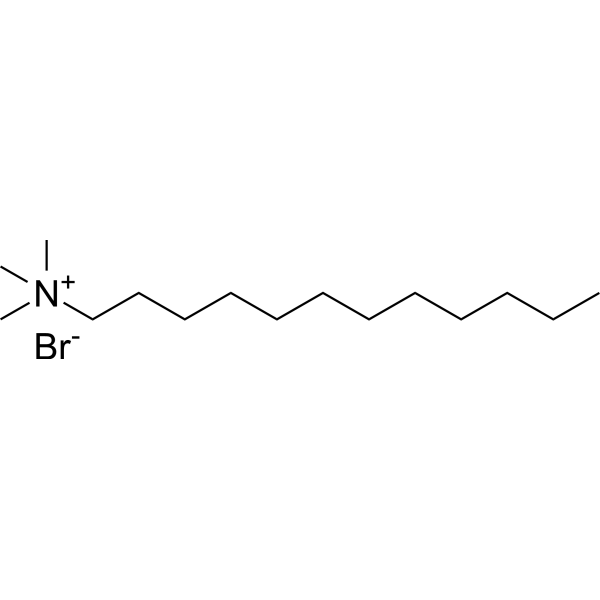
-
- HY-N0549
-
-
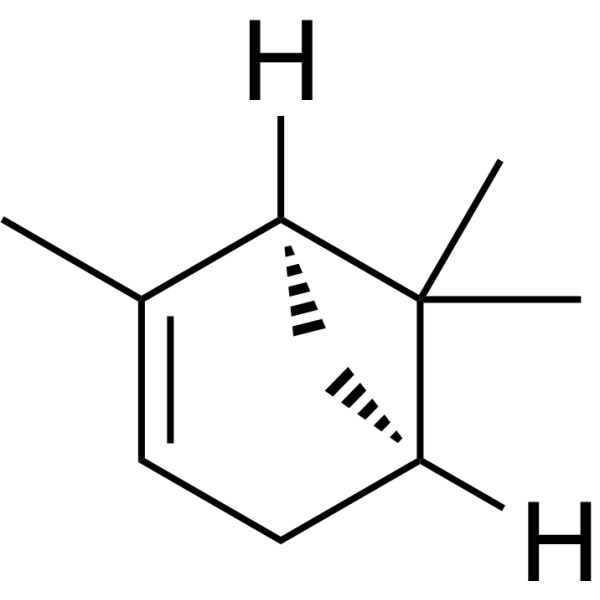
-
- HY-16261B
-
|
(E/Z)-Aldoxorubicin hydrochloride; Doxorubicin(6-maleimidocaproyl)hydrazone hydrochloride
|
Topoisomerase
Drug-Linker Conjugates for ADC
|
Cancer
|
|
MC-DOXHZN ((E/Z)-Aldoxorubicin) hydrochloride is an albumin-binding proagent of Doxorubicin (DNA topoisomerase II inhibitor), with acid-sensitive properties .
|
-
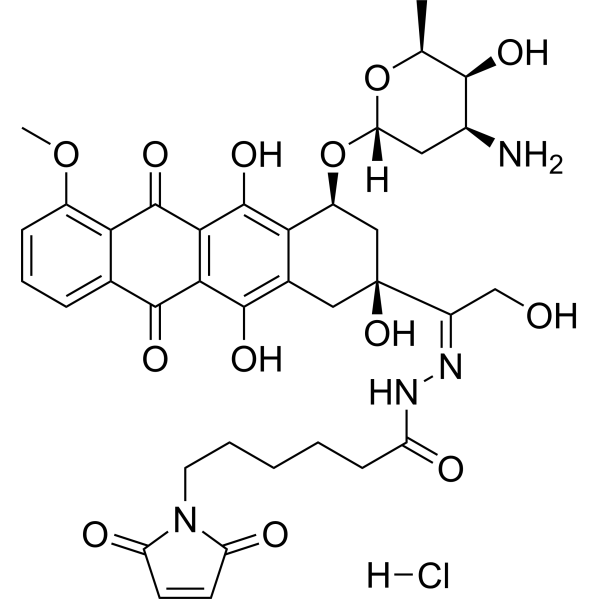
-
- HY-16261A
-
|
(E/Z)-Aldoxorubicin; Doxorubicin(6-maleimidocaproyl)hydrazone
|
Topoisomerase
Drug-Linker Conjugates for ADC
|
Cancer
|
|
MC-DOXHZN ((E/Z)-Aldoxorubicin) is an albumin-binding proagent of Doxorubicin (DNA topoisomerase II inhibitor), with acid-sensitive properties .
|
-

-
- HY-D0838S
-
|
|
Isotope-Labeled Compounds
|
Others
|
|
Dodecyltrimethylammonium-d25 (bromide) is the deuterium labeled Dodecyltrimethylammonium (bromide)[1]. Dodecyltrimethylammonium bromide (DTAB) is a surfactant. Dodecyltrimethylammonium bromide interacts with DNA and changes the mechanical properties of DNA on binding and the specific binding parameters of the interaction[2].
|
-
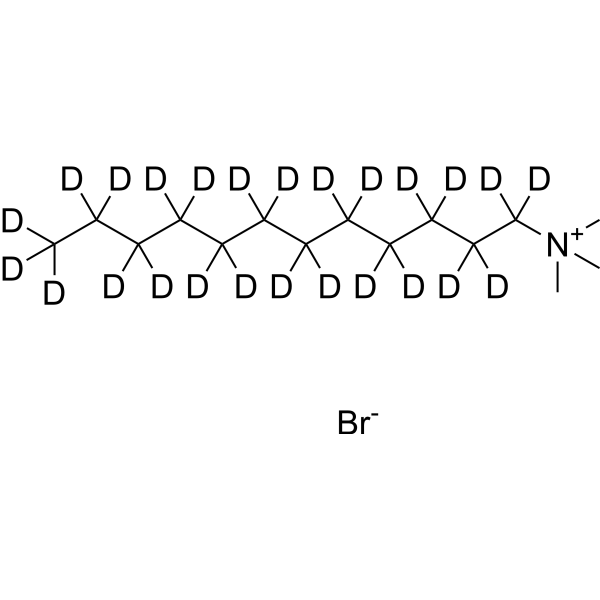
-
- HY-D0838S1
-
|
|
Isotope-Labeled Compounds
|
Others
|
|
Dodecyltrimethylammonium-d34 (bromide) is the deuterium labeled Dodecyltrimethylammonium (bromide)[1]. Dodecyltrimethylammonium bromide (DTAB) is a surfactant. Dodecyltrimethylammonium bromide interacts with DNA and changes the mechanical properties of DNA on binding and the specific binding parameters of the interaction[2].
|
-
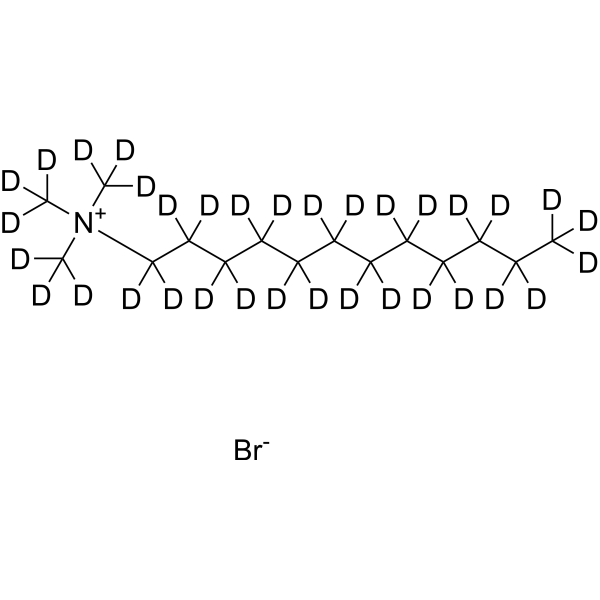
-
- HY-157322
-
|
|
Others
|
Infection
|
|
SAV13 is an inhibitor of SaeR. SAV13 is an analogue of HR3744. SAV13 inhibits SaeR-DNA probe binding and has antivirulence properties .
|
-

-
- HY-N7437
-
-
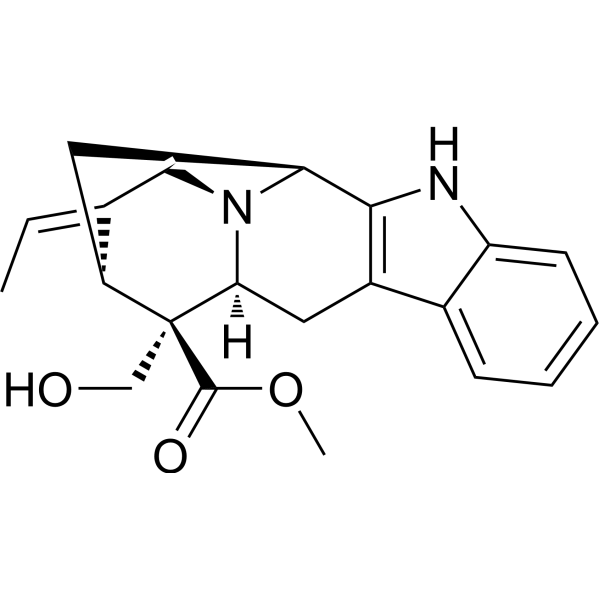
-
- HY-46317
-
|
|
DNA/RNA Synthesis
|
Others
|
|
DMT-5Me-dC(Bz)-CE Phosphoramidite is used in the preparation of locked nucleic acids (LNAs) for optimization of fluorescent oligonucleotide probes with improved spectral properties and target binding .
|
-
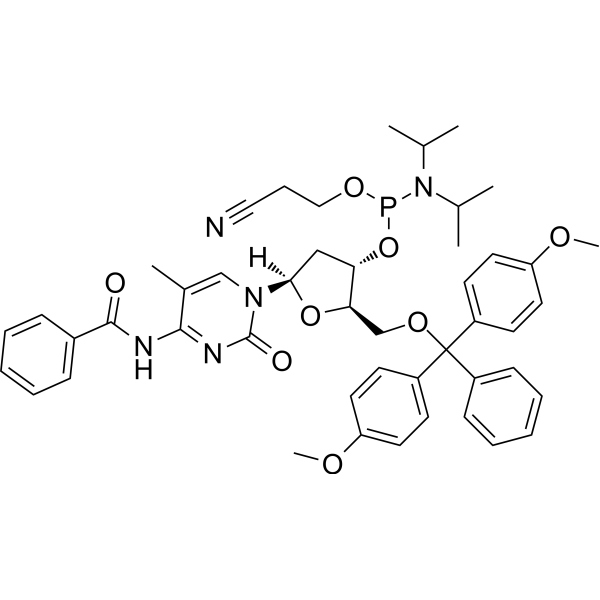
-
- HY-13756S
-
|
FK506-13C,d2; Fujimycin-13C,d2; FR900506-13C,d2
|
Phosphatase
FKBP
Bacterial
Autophagy
Antibiotic
|
Infection
Inflammation/Immunology
Cancer
|
|
Tacrolimus- 13C,d2 is a 13C-labeled and deuterium labeled Tacrolimus. Tacrolimus (FK506), a macrocyclic lactone, binds to FK506 binding protein (FKBP) to form a complex. Tacrolimus inhibits calcineurin phosphatase, which inhibits T-lymphocyte signal transduction and IL-2 transcription. Immunosuppressive properties[1].
|
-

-
- HY-113667
-
|
|
Others
|
Cardiovascular Disease
Neurological Disease
|
|
ASN04885796 (compound IV) is an GPR17 activator with an EC50 of 2.27 nM for GPR17 induced GTPγS binding. ASN04885796 has neuroprotective property and can be used for research of neurological diseases .
|
-

-
- HY-P2516
-
|
|
Tau Protein
|
Neurological Disease
|
|
Tau Peptide (275-305) (Repeat 2 domain) is the Alzheimer's tau fragment R2, corresponding to the second repeat unit of the microtubule-binding domain, which is believed to be pivotal to the biochemical properties of full tau protein .
|
-

-
- HY-13756A
-
|
FK506 monohydrate; Fujimycin monohydrate; FR900506 monohydrate
|
Phosphatase
FKBP
Autophagy
Bacterial
Antibiotic
|
Infection
Inflammation/Immunology
Cancer
|
|
Tacrolimus monohydrate (FK506 monohydrate), a macrocyclic lactone, binds to FK506 binding protein (FKBP) to form a complex and inhibits calcineurin phosphatase, which inhibits T-lymphocyte signal transduction and IL-2 transcription. Immunosuppressive properties .
|
-
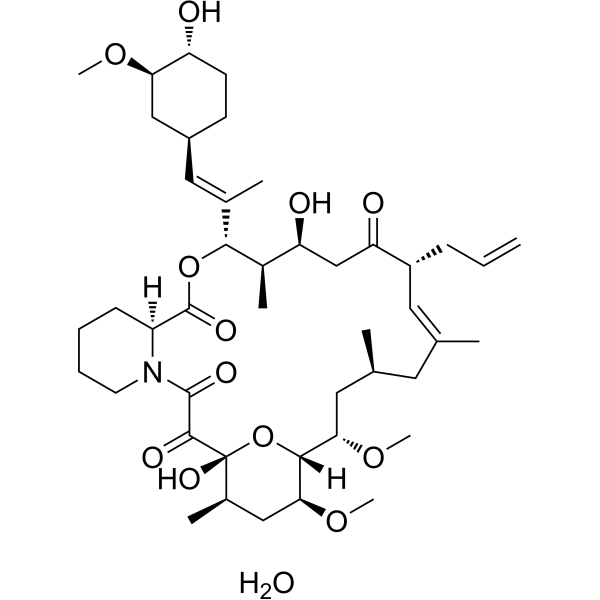
-
- HY-13756
-
-
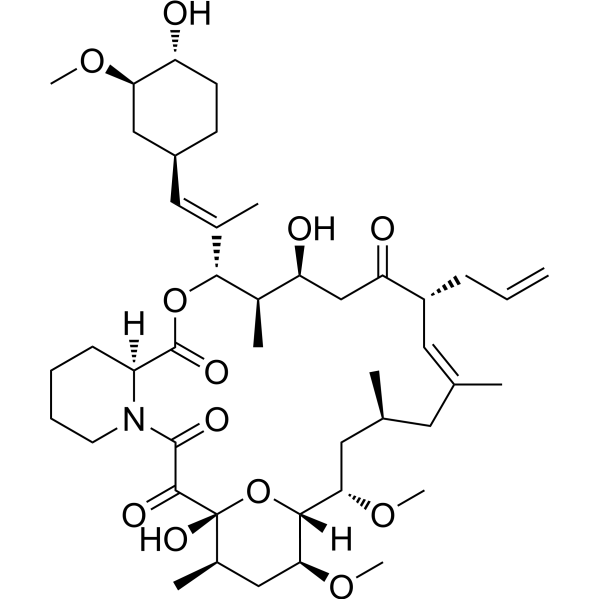
-
- HY-P0122
-
|
c(CRGDKGPDC)
|
|
|
|
iRGD peptide is a 9-amino acid cyclic peptide, triggers tissue penetration of agents by first binding to αv-integrins, then proteolytically cleaved in the tumor to produce CRGDK/R to interact with neuropilin-1, and has tumor-targeting and tumor-penetrating properties.
|
-
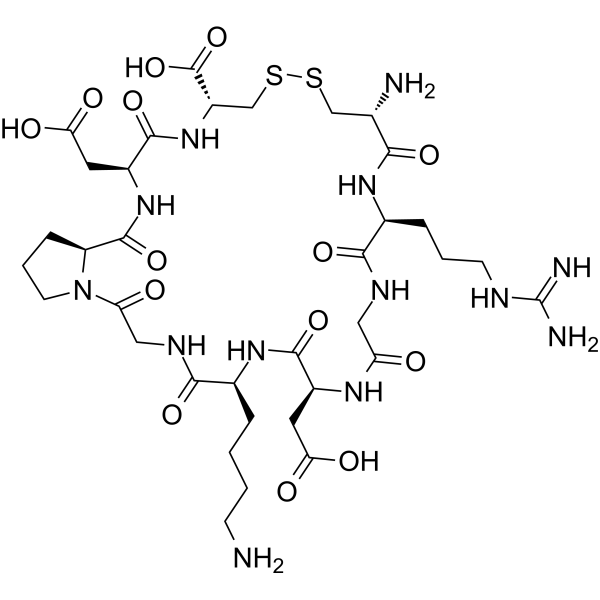
-
- HY-N10616
-
|
|
Others
|
Metabolic Disease
|
|
Pseudobaptigenin is a flavonoid. Pseudobaptigenin shows very good anticataract activity. Pseudobaptigenin has good binding affinity for the inhibition of glycation against γ-crystallin protein. Pseudobaptigenin also has good ADMET (Absorption, Distribution, Metabolism, Excretion and Toxicity) property .
|
-

-
- HY-P0185
-
|
|
Opioid Receptor
|
Neurological Disease
|
|
Endomorphin 1, a high affinity, highly selective agonist of the μ-opioid receptor (Ki: 1.11 nM), displays reasonable affinities for kappa3 binding sites, with Ki value between 20 and 30 nM. Endomorphin 1 has antinociceptive properties .
|
-
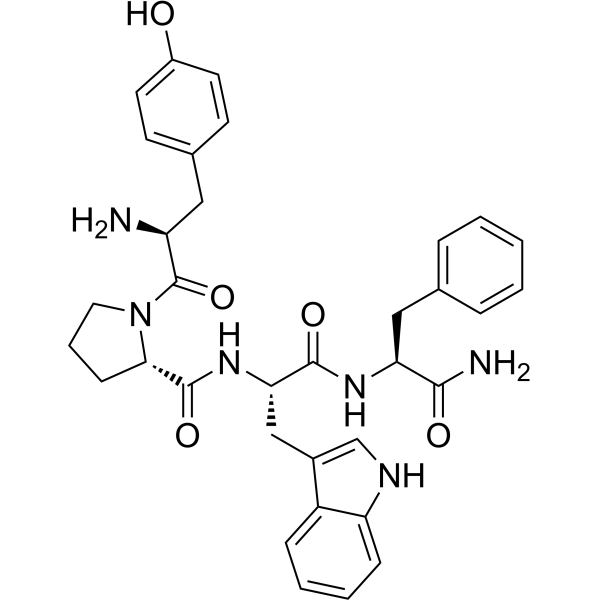
-
- HY-P0185A
-
|
|
Opioid Receptor
|
Neurological Disease
|
|
Endomorphin 1 acetate, a high affinity, highly selective agonist of the μ-opioid receptor (Ki: 1.11 nM), displays reasonable affinities for kappa3 binding sites, with Ki value between 20 and 30 nM. Endomorphin 1 acetate has antinociceptive properties .
|
-

-
- HY-130000
-
|
STP0404
|
HIV Integrase
HIV
|
Infection
|
|
Pirmitegravir is a potent and first-in-class inhibitor of allosteric integrase (ALLINI) that targets LEDGF/p75 binding site. Pirmitegravir displays picomolar IC50 in human PBMCs with a >24,000 therapeutic index against HIV-1. Pirmitegravir harbors outstanding anti-virus and safety properties .
|
-

-
- HY-119437
-
FLTX1
2 Publications Verification
|
Estrogen Receptor/ERR
|
Cancer
|
|
FLTX1 is a fluorescent Tamoxifen derivative that can specifically label intracellular Tamoxifen-binding sites (estrogen receptors) under permeabilized and non-permeabilized conditions. FLTX1 exhibits the potent antiestrogenic properties of Tamoxifen in breast cancer cells. FLTX1 is devoid of the estrogenic agonistic effect on the uterus .
|
-

-
- HY-158125
-
|
|
PSMA
|
Cancer
|
|
PSMA binder-2 is a ligand for PSMA and can be used to synthesize Ac-PSMA-trillium. Ac-PSMA-trillium is a suitable PSMA-targeting compound with improved PSMA binding properties and pharmacokinetic properties. PSMA ligands have different biological applications after being modified with different radioactive isotopes. If labeled with 111In, it can be used as DOTA chelating agent and imaging agent. Or labeled with 225Ac as a Macropa chelator for targeted radionuclide therapy (TRT) in the study of metastatic castration-resistant prostate cancer (mCRPC) .
|
-
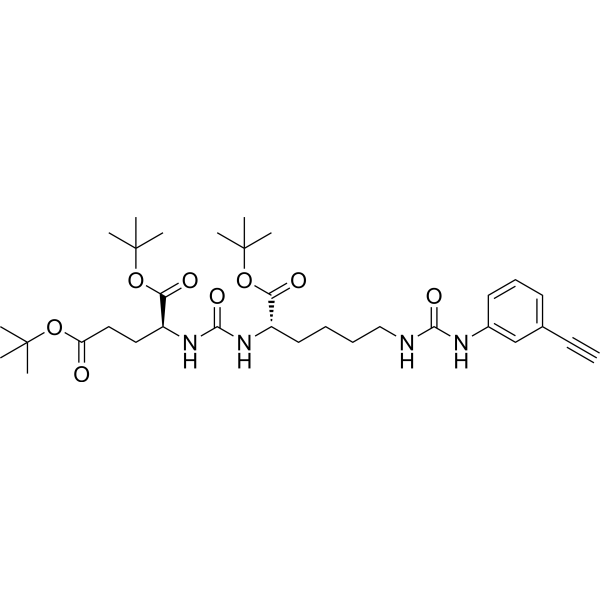
-
- HY-118667
-
|
Ergosta-5,7,9(11),22-tetraen-3β-ol
|
Biochemical Assay Reagents
|
Others
|
|
Dehydroergosterolis a naturally occurring fluorescent sterol analog (Ex/Em=325/375 nm), which mimics the properties of cholesterol in cell membranes. DehydroergosterolEasily conjugated by cholesterol-binding proteins for real-time imaging in live cells. DehydroergosterolThe sterol environment and intracellular sterol transport in vivo can be probed/elucidated in real time .
|
-
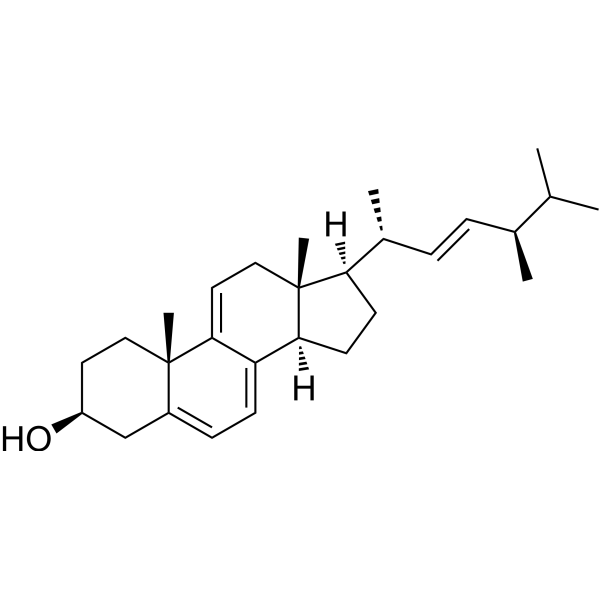
-
- HY-162351
-
|
|
Others
|
Metabolic Disease
|
|
EBP-IN-1 (compound 11) is an inhibitor of emopamil-binding protein (EBP), a sterol isomerase in the cholesterol biosynthetic pathway. EBP-IN-1 has a long half-life in rodents and has good metabolic turnover and brain penetration properties. EBP-IN-1 enhances oligodendrocyte formation in human cortical organoids .
|
-
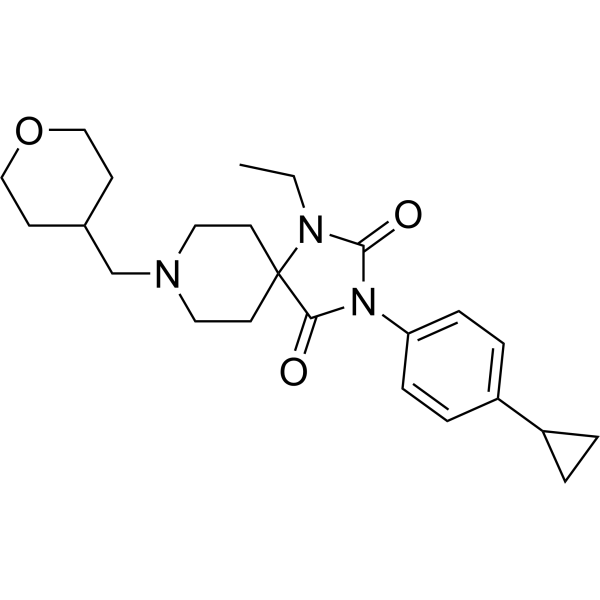
-
- HY-153847
-
|
|
Others
|
Others
|
|
RNA Aptamer Mango Ⅱ (sodium) has an exceptionally high affinity to TO1-biotin (a thiazole orange derivative fluorophore), and can be used to visualize RNA expression or localization in live cells. Compared to the original Mango I aptamer, RNA Aptamer Mango Ⅱ (sodium) has markedly improved fluorescent properties, binding affinities, and salt dependencies.
|
-

-
- HY-153848
-
|
|
Others
|
Others
|
|
RNA Aptamer Mango Ⅳ (sodium) has an exceptionally high affinity to TO1-biotin (a thiazole orange derivative fluorophore), and can be used to visualize RNA expression or localization in live cells. Compared to the original Mango I aptamer, RNA Aptamer Mango Ⅳ has markedly improved fluorescent properties, binding affinities, and salt dependencies.
|
-

-
- HY-103304
-
|
|
Others
|
Neurological Disease
|
|
CGRP antagonist 4 is an antagonist of calcitonin gene-related peptide (CGRP) receptor. CGRP antagonist 4 shows the highest affinity for CGRP receptors in the human brain. CGRP antagonist 4 can be used to study the binding properties of non-peptide calcitonin gene-related peptide (CGRP) receptor antagonist (gepants) in rat, pig and human menes .
|
-
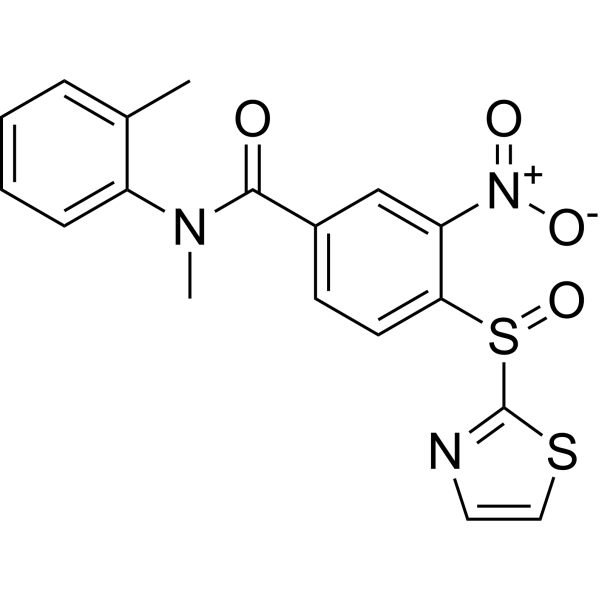
-
- HY-153849
-
|
|
Others
|
Others
|
|
RNA Aptamer Mango Ⅲ (sodium) has an exceptionally high affinity to TO1-biotin (a thiazole orange derivative fluorophore), and can be used to visualize RNA expression or localization in live cells. Compared to the original Mango I aptamer, RNA Aptamer Mango Ⅲ has markedly improved fluorescent properties, binding affinities, and salt dependencies.
|
-

-
- HY-145857
-
|
|
HSP
Apoptosis
|
Cancer
|
|
GRP78-IN-1 exhibits several interactions with GRP78 residues with binding energy of -8.07 kcal/mol. GRP78-IN-1 shows the potent cytotoxic, anti-proliferative in cancer cells. GRP78-IN-1 exhibits promising apoptosis in breast cancer cells and wound healing properties .
|
-
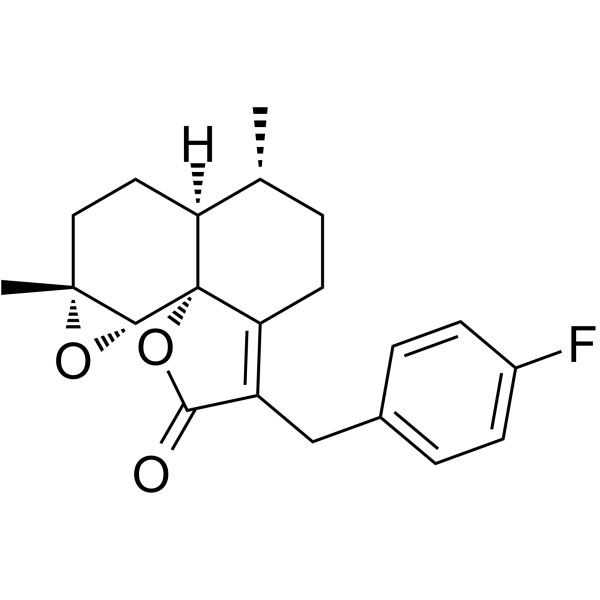
-
- HY-132194
-
|
|
Estrogen Receptor/ERR
|
Cancer
|
|
ERα degrader-2 is a selective estrogen receptor degrader (SERD) with potent binding affinity with ERα (IC50=17.1 nM), good degradation efficacy (EC50=0.3 nM). ERα degrader-2 exhibits favorable pharmacokinetic properties and excellent agentgability, can be used for HER + breast cancer research .
|
-
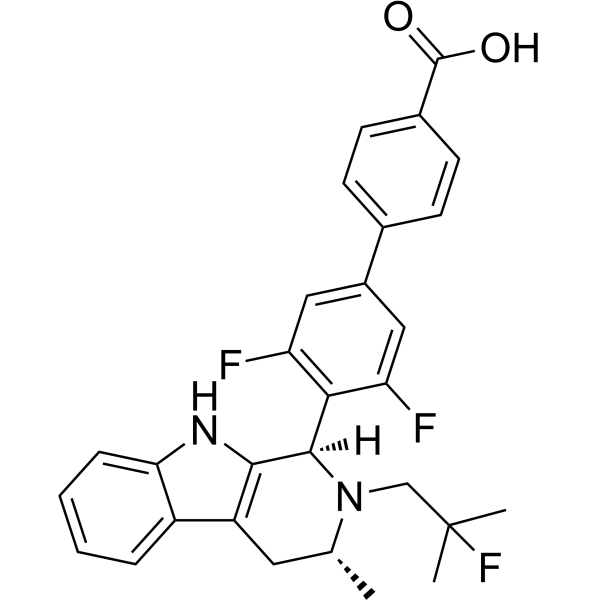
-
- HY-105115
-
|
ZK 112119
|
GABA Receptor
|
Neurological Disease
|
|
Abecarnil (ZK 112119) is a ligand or a partial agonist for benzodiazepine (BZ) receptor. Abecarnil possesses anxiolytic and anticonvulsant properties. Abecarnil can act as a positive allosteric modulator of GABAA receptor. Abecarnil inhibits the binding of the BZ [3H]lormetazepam to rat cerebral cortex membranes, with an IC50 of 0.82 nM. Abecarnil can be used for epilepsy research .
|
-
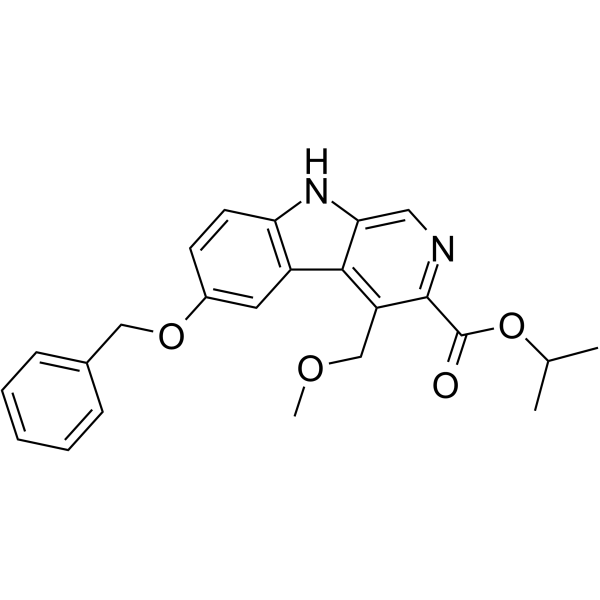
-
- HY-N2587
-
|
|
Integrin
Apoptosis
|
Cancer
|
|
Irigenin is a is a lead compound, and mediates its anti-metastatic effect by specifically and selectively blocking α9β1 and α4β1 integrins binding sites on C-C loop of Extra Domain A (EDA). Irigenin shows anti-cancer properties. It sensitizes TRAIL-induced apoptosis via enhancing pro-apoptotic molecules in gastric cancer cells .
|
-

-
- HY-12404
-
|
Diminazene diaceturate
|
Parasite
Angiotensin-converting Enzyme (ACE)
|
Infection
Inflammation/Immunology
|
|
Diminazene aceturate (Diminazene diaceturate) is an anti-trypanosome agent for livestock. The main biochemical mechanism of the trypanocidal actions of Diminazene aceturate is by binding to trypanosomal kinetoplast DNA (kDNA) in a non-intercalative manner through specific interaction with sites rich in adenine-thymine base pairs. Diminazene aceturate is also an angiotensin-converting enzyme 2 (ACE2) activator and has strong and potent anti-inflammatory properties .
|
-

-
- HY-160489
-
|
|
β-catenin
|
Cancer
|
|
PTK7/β-catenin-IN-2 (compound 04967) is an inhibitor of PTK7/β-catenin. It inhibits the binding of PTK7 to β-catenin (IC50: 5.6 μM), thereby inhibiting the signaling of the Wnt/β-catenin pathway. PTK7/β-catenin-IN-2 targets cell growth dependent on the Wnt signaling pathway and has anticancer properties. PTK7/β-catenin-IN-2 also showed inhibitory potency against p53 and MDM2 binding with an IC50 of 157.1 μM .
|
-

-
- HY-158123
-
|
|
PSMA
|
Cancer
|
|
PSMA binder-1 is a ligand for PSMA and can be used to synthesize Ac-PSMA-trillium. Ac-PSMA-trillium is a suitable PSMA-targeting compound with improved PSMA binding properties and pharmacokinetic properties. PSMA ligands have different biological applications after being modified with different radioactive isotopes. If labeled with 111In, it can be used as DOTA chelating agent and imaging agent. Or it can be labeled with 225Ac (to obtain Actinium-225-PSMA-Trillium (BAY 3563254)), which has a radioactive killing effect; it can be used as a Macropa chelator for targeted radionuclide therapy (TRT) , has a strong inhibitory effect on metastatic castration-resistant prostate cancer (mCRPC) .
|
-

-
- HY-121900
-
|
|
PPAR
|
Metabolic Disease
Endocrinology
|
|
LT175, a dual PPARα/γ ligand, is an orally active partial agonist against PPARγ(hPPARα:EC50=0.22 μm; mPPARα:EC50=0.26 μm; hPPARγ:EC50=0.48 μm). LT175 interacts with PPARγ and affects the recruitment of the coregulators cyclic-AMP response element-binding protein-binding protein and nuclear corepressor 1 (NCoR1). LT175 interacts with PPARγ in a hydrophobic region called “diphenyl pocket”. LT175 has potent insulin-sensitizing effects and reduced adipogenic properties .
|
-
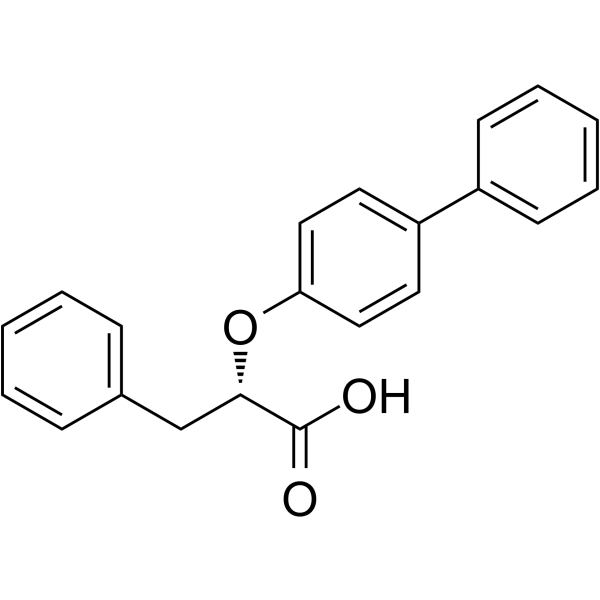
-
- HY-158107
-
|
|
Ras
|
Cancer
|
|
BBO-8520 is a direct small molecule covalent inhibitor targeting KRAS G12C. It has both KRAS G12C (OFF) inhibitor properties and blocks KRAS G12C< /sup> (ON) The role of the signal. BBO-8520 inhibits KRAS G12C (ON) by locking the GTP-binding protein in state 1, a conformation incapable of binding effectors, thereby inhibiting the downstream signaling of KRAS G12C (ON) that promotes cell proliferation. BBO-8520 also rapidly and completely blocks the RAS-RAF1 interaction, returning KRAS G12C to its inactive (OFF) state.
|
-

-
- HY-110024
-
|
|
5-HT Receptor
Dopamine Receptor
|
Neurological Disease
|
|
S-14506 hydrochloride is a potent 5-HT1A agonist, as well as 5-HT2A/2C antagonist. S-14506 hydrochloride displays dopamine antagonist properties by blocking dopamine D2 receptors. S-14506 hydrochloride inhibits the in vivo binding of [3H]raclopride in striatum and olfactory bulbs. S-14506 hydrochloride has the potential for the research of anxiolytic agent .
|
-

-
- HY-17412
-
-

-
- HY-17412A
-
-

-
- HY-104086
-
|
CB7; Carrier CB7
|
Biochemical Assay Reagents
|
Others
|
|
Cucurbit[7]uril is a cyclic organic molecule consisting of seven glycoluril units linked by methylene bridges. It has a rigid barrel-like structure with two identical inlets at both ends to selectively encapsulate guest molecules of appropriate size, shape, and polarity. Cucurbit[7]uril is known for its high binding affinity for a variety of organic and inorganic guests, including drugs, amino acids, peptides, and metal ions. This property makes them promising candidates for various applications in areas such as drug delivery, catalysis, and sensing.
|
-
![Cucurbit[7]uril](//file.medchemexpress.com/product_pic/hy-104086.gif)
-
- HY-127102
-
|
DDD01305143
|
Parasite
Proteasome
|
Infection
|
|
GSK3494245 (DDD01305143) is a potent, orally active, and selective inhibitor of the chymotrypsin-like activity of the parasite proteasome binding in a site sandwiched between the β4 and β5 subunits (IC50=0.16 μM for WT L. donovani proteasomes). GSK3494245 moderately inhibits chymotrypsin-like activity of human proteasome (IC50: purified 26S=13 µM; enriched THP-1 extracts IC50=40µM). GSK3494245 exhibits attractive biological and biosafety properties .
|
-
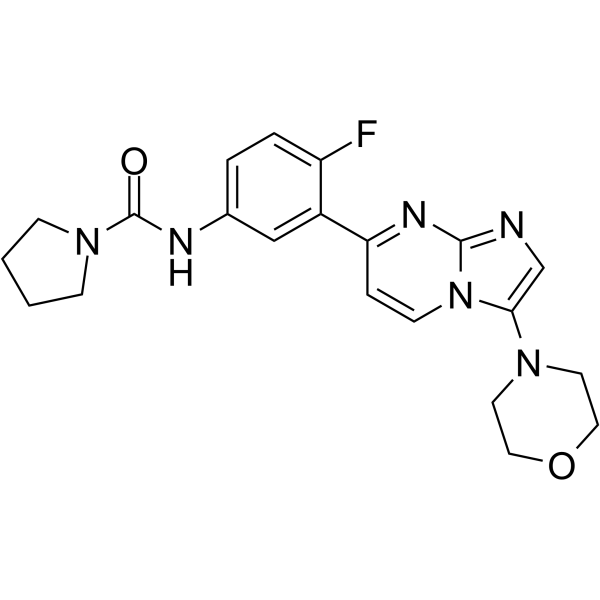
-
- HY-163116
-
|
|
COX
Carbonic Anhydrase
|
Neurological Disease
Inflammation/Immunology
|
|
Anti-inflammatory agent 67 (compound 7a) is a dual inhibitor of carbonic anhydrase and COX-2, a sulfonamide derivative of Polmacoxib (HY-16726), and has anti-inflammatory properties and analgesic activity. Anti-inflammatory agent 67 has IC50s of 10.4 μM and 50 nM for COX-1 and COX-2, respectively. The Ki of anti-inflammatory agent 67 binding to different isoforms of carbonic anhydrase are 48.3 nM (CA I), 42.2 nM (CA II), 52.3 nM (CA IX), and 13.3 nM (CA XII) .
|
-
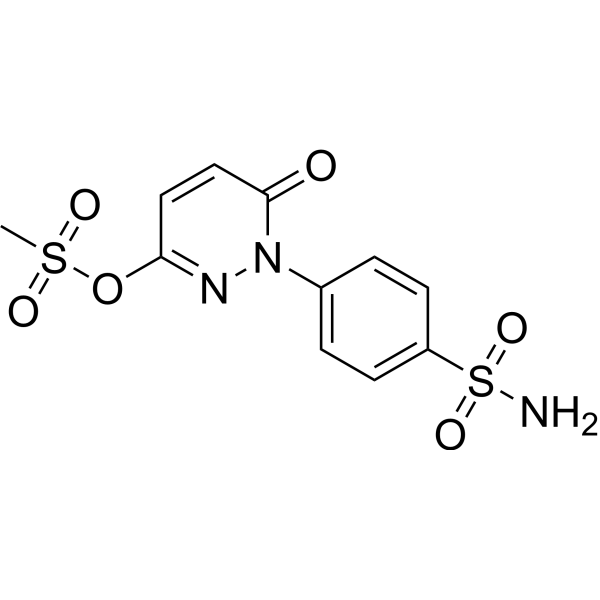
-
- HY-163117
-
|
|
COX
Carbonic Anhydrase
|
Neurological Disease
Inflammation/Immunology
|
|
Anti-inflammatory agent 68 (compound 7b) is a dual inhibitor of carbonic anhydrase and COX-2, a sulfonamide derivative of Polmacoxib (HY-16726), with anti-inflammatory properties and analgesic activity. Anti-inflammatory agent 68 has IC50s of 12.6 μM and 60 nM for COX-1 and COX-2, respectively. The Ki of anti-inflammatory agent 68 binding to different isoforms of carbonic anhydrase are 52.6 nM (CA I), 79.1 nM (CA II), 58.1 nM (CA IX), and 17.2 nM (CA XII) .
|
-
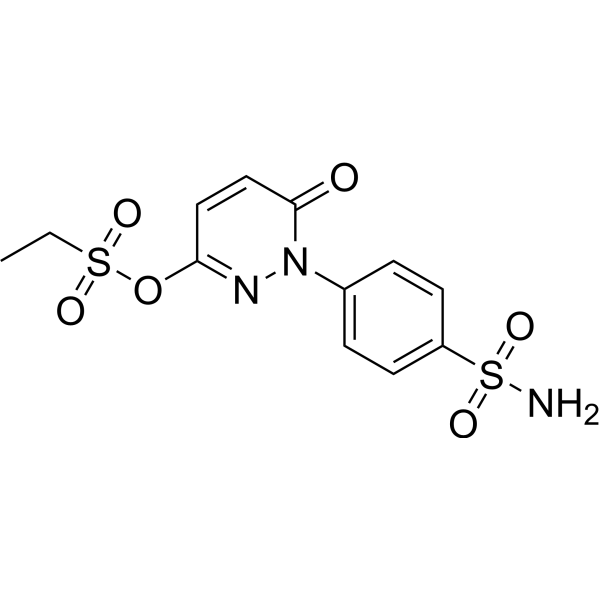
-
- HY-17412R
-
-
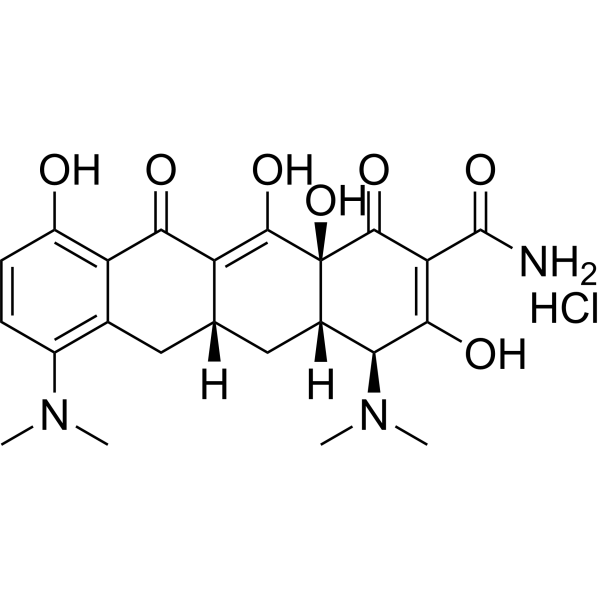
-
- HY-103247
-
|
|
Angiotensin Receptor
|
Cardiovascular Disease
|
|
EMD 66684 is an antagonist of Angiotensin II Type 1 (AT1) receptor. EMD 66684 shows potent binding affinities for the AT1 subtype Ang II receptor with an IC50 value of 0.7 nM. EMD 66684 also serves as an antiischemic cytoprotectant - .
|
-

-
- HY-W145516
-
|
|
Biochemical Assay Reagents
|
Others
|
|
Guar gum is a versatile polymer for drug delivery applications. Guar gum diaplays thickening, emulsifying, binding and gelling properties, quick solubility in cold water, wide pH stability, film forming ability and biodegradability, it finds applications in large number of industries. Guar gum can be isolated from the powdered endosperm of the seeds of the Cyamopsis tetragonolobus. Guar gum can be used as an excipient, such as thickener, suspending agent. Pharmaceutical excipients, or pharmaceutical auxiliaries, refer to other chemical substances used in the pharmaceutical process other than pharmaceutical ingredients. Pharmaceutical excipients generally refer to inactive ingredients in pharmaceutical preparations, which can improve the stability, solubility and processability of pharmaceutical preparations. Pharmaceutical excipients also affect the absorption, distribution, metabolism, and elimination (ADME) processes of co-administered drugs .
|
-

-
- HY-158122
-
|
|
DNA-PK
|
Cancer
|
|
Lys(CO-C3-p-I-Ph)-O-tBu is a pharmacokinetic modifier (PK modifier) that can improve the PK properties of PSMA ligand molecules. Lys(CO-C3-p-I-Ph)-O-tBu can increase the residence time of PSMA ligand in plasma by increasing its binding capacity to albumin. Lys(CO-C3-p-I-Ph)-O-tBu also reduces salivary gland absorption, possibly extending the half-life of the active compound. Ac-PSMA-trillium is a suitable PSMA-targeting compound that has different biological applications after modification with different radioactive isotopes. If labeled with 111In, it can be used as DOTA chelating agent and imaging agent. Or labeled with 225Ac as a Macropa chelator for targeted radionuclide therapy (TRT) in the study of metastatic castration-resistant prostate cancer (mCRPC) .
|
-
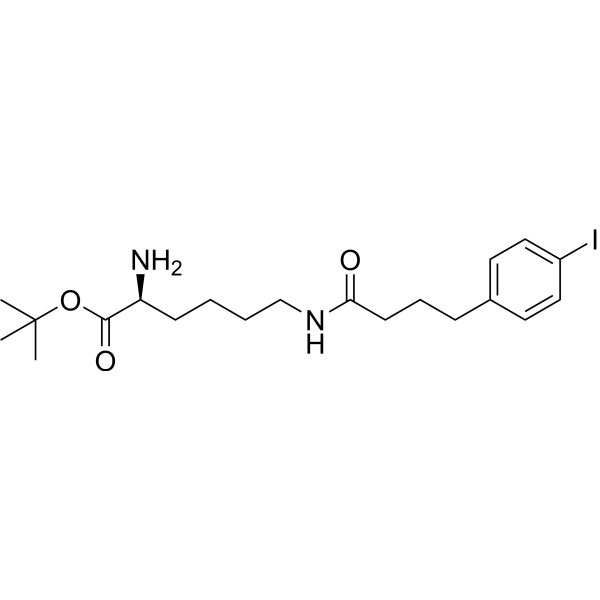
-
- HY-158118
-
|
|
DNA-PK
|
Cancer
|
|
Lys(CO-C3-p-I-Ph)-OMe is a pharmacokinetic modifier (PK modifier) that can improve the PK properties of PSMA ligand molecules (such as Ac-PSMA-trillium). Lys(CO-C3-p-I-Ph)-OMe can increase the residence time of Ac-PSMA-trillium in plasma by increasing its binding capacity to albumin. Lys(CO-C3-p-I-Ph)-OMe also reduces salivary gland absorption of Ac-PSMA-trillium, potentially extending its half-life. Ac-PSMA-trillium is a suitable PSMA-targeting compound that has different biological applications after modification with different radioactive isotopes. If labeled with 111In, it can be used as DOTA chelating agent and imaging agent. Or labeled with 225Ac as a Macropa chelator for targeted radionuclide therapy (TRT) in the study of metastatic castration-resistant prostate cancer (mCRPC) .
|
-
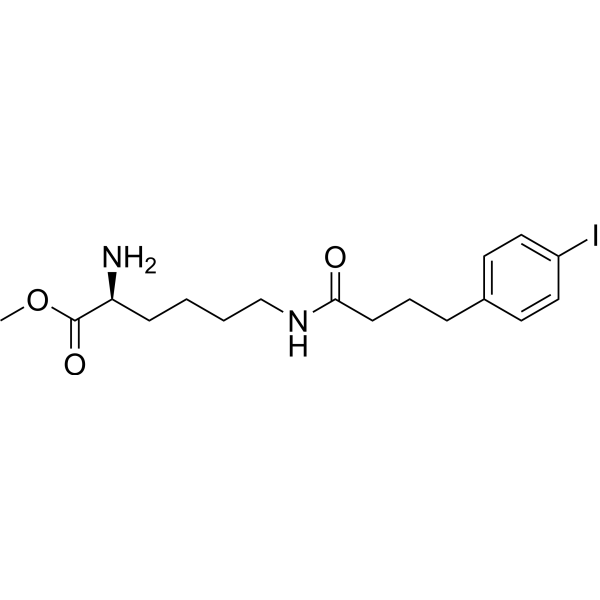
-
-
HY-L041
-
|
|
364 compounds
|
|
Macrocycles, molecules containing 12-membered or larger rings, are receiving increased attention in small-molecule drug discovery. The reasons are several, including providing access to novel chemical space, challenging new protein targets, showing favorable ADME- and PK-properties. Macrocycles have demonstrated repeated success when addressing targets that have proved to be highly challenging for standard small-molecule drug discovery, especially in modulating macromolecular processes such as protein–protein interactions (PPI). Otherwise, the size and complexity of macrocyclic compounds make possible to ensure numerous and spatially distributed binding interactions, thereby increasing both binding affinity and selectivity.
MCE offers a unique collection of 364 macrocyclic compounds which can be used for drug discovery for high throughput screening (HTS) and high content screening (HCS). MCE Macrocyclic Compound Library is a useful tool for discovering new drugs, especially for “undruggable” targets and protein–protein interactions.
|
-
-
HY-L0115V
-
|
|
10,091 compounds
|
|
ASINEX has elaborated a library of diverse macrocycles using an effective tool box of synthetic methods. The resulting scaffolds are novel, tremendously diverse, medchem-relevant, macrocyclic frameworks.
Macrocyles tend to be larger than traditional screening molecules which make them perfect discovery tools for targets with shallow or extended binding sites. At the same time, their unique character based on restricted flexibility and ability to form intra-molecular hydrogen bonds allows for design approaches effectively optimizing properties such asaqueous solubility and membrane permeability. Many of these macrocycles have been tested for aqueous and DMSO solubility with cut-offs applied at 10 mM in DMSO and 50 µM in PBS (pH 7.4) followed by PAMPA permeability assay.
|
| Cat. No. |
Product Name |
Type |
-
- HY-P2995
-
|
|
Native Proteins
|
|
Hemoglobin is a iron-containing protein in red blood cells with oxygen binding properties. Hemoglobin consits of heme, which binds to oxygen. Hemoglobin also transports other gases, such as carbon dioxide, nitric oxide, hydrogen sulfide and sulfide. Hemoglobin absorbs unneeded oxygen in tissues, as an antioxidant .
|
-
- HY-104086
-
|
CB7; Carrier CB7
|
Biochemical Assay Reagents
|
|
Cucurbit[7]uril is a cyclic organic molecule consisting of seven glycoluril units linked by methylene bridges. It has a rigid barrel-like structure with two identical inlets at both ends to selectively encapsulate guest molecules of appropriate size, shape, and polarity. Cucurbit[7]uril is known for its high binding affinity for a variety of organic and inorganic guests, including drugs, amino acids, peptides, and metal ions. This property makes them promising candidates for various applications in areas such as drug delivery, catalysis, and sensing.
|
-
- HY-118667
-
|
Ergosta-5,7,9(11),22-tetraen-3β-ol
|
Biochemical Assay Reagents
|
|
Dehydroergosterolis a naturally occurring fluorescent sterol analog (Ex/Em=325/375 nm), which mimics the properties of cholesterol in cell membranes. DehydroergosterolEasily conjugated by cholesterol-binding proteins for real-time imaging in live cells. DehydroergosterolThe sterol environment and intracellular sterol transport in vivo can be probed/elucidated in real time .
|
| Cat. No. |
Product Name |
Target |
Research Area |
-
- HY-P5098
-
|
|
Peptides
|
Cancer
|
|
E(c(RGDfK)) is an αvβ3 integrin-specific binding moiety with tumor targeting properties. Increased uptake of E(c(RGDfK)) in human ovarian cancer OVCAR-3 xenograft tumors may be useful in cancer research .
|
-
- HY-P0185
-
|
|
Opioid Receptor
|
Neurological Disease
|
|
Endomorphin 1, a high affinity, highly selective agonist of the μ-opioid receptor (Ki: 1.11 nM), displays reasonable affinities for kappa3 binding sites, with Ki value between 20 and 30 nM. Endomorphin 1 has antinociceptive properties .
|
-
- HY-P0185A
-
|
|
Opioid Receptor
|
Neurological Disease
|
|
Endomorphin 1 acetate, a high affinity, highly selective agonist of the μ-opioid receptor (Ki: 1.11 nM), displays reasonable affinities for kappa3 binding sites, with Ki value between 20 and 30 nM. Endomorphin 1 acetate has antinociceptive properties .
|
-
- HY-P2516
-
|
|
Tau Protein
|
Neurological Disease
|
|
Tau Peptide (275-305) (Repeat 2 domain) is the Alzheimer's tau fragment R2, corresponding to the second repeat unit of the microtubule-binding domain, which is believed to be pivotal to the biochemical properties of full tau protein .
|
-
- HY-P5471
-
|
[Leu27]-Melan-A, MART-1 (26-35)
|
Peptides
|
Others
|
|
Melan-A/MART-1 analog ([Leu27]-Melan-A, MART-1 (26-35)) is a biological active peptide. (This Melan-A (26-35) analog, Leu substituted for Ala at position 27, shows better HLA-A*0201 binding properties as well as better immunogenicity and antigenicity than the natural Melan-A (26-35).Pyroglutamyl (pGlu) peptides may spontaneously form when either Glutamine (Q) or Glutamic acid (E) is located at the sequence N-terminus. The conversion of Q or E to pGlu is a natural occurrence and in general it is believed that the hydrophobic γ-lactam ring of pGlu may play a role in peptide stability against gastrointestinal proteases. Pyroglutamyl peptides are therefore considered a normal subset of such peptides and are included as part of the peptide purity during HPLC analysis.)
|
| Cat. No. |
Product Name |
Category |
Target |
Chemical Structure |
-
- HY-N0549
-
-

-
- HY-13756A
-
-

-
- HY-13756
-
-

-
- HY-N7437
-
-

-
- HY-N10616
-
-

-
- HY-P0185
-
-

-
- HY-N2587
-
-

-
- HY-W145516
-
|
|
Structural Classification
Natural Products
Leguminosae
Source classification
Cyamopsis tetragonoloba (L.) Taub.
Plants
|
Biochemical Assay Reagents
|
|
Guar gum is a versatile polymer for drug delivery applications. Guar gum diaplays thickening, emulsifying, binding and gelling properties, quick solubility in cold water, wide pH stability, film forming ability and biodegradability, it finds applications in large number of industries. Guar gum can be isolated from the powdered endosperm of the seeds of the Cyamopsis tetragonolobus. Guar gum can be used as an excipient, such as thickener, suspending agent. Pharmaceutical excipients, or pharmaceutical auxiliaries, refer to other chemical substances used in the pharmaceutical process other than pharmaceutical ingredients. Pharmaceutical excipients generally refer to inactive ingredients in pharmaceutical preparations, which can improve the stability, solubility and processability of pharmaceutical preparations. Pharmaceutical excipients also affect the absorption, distribution, metabolism, and elimination (ADME) processes of co-administered drugs .
|
-

| Cat. No. |
Product Name |
Chemical Structure |
-
- HY-13756S
-
|
|
|
Tacrolimus- 13C,d2 is a 13C-labeled and deuterium labeled Tacrolimus. Tacrolimus (FK506), a macrocyclic lactone, binds to FK506 binding protein (FKBP) to form a complex. Tacrolimus inhibits calcineurin phosphatase, which inhibits T-lymphocyte signal transduction and IL-2 transcription. Immunosuppressive properties[1].
|
-

-
- HY-D0838S
-
|
|
|
Dodecyltrimethylammonium-d25 (bromide) is the deuterium labeled Dodecyltrimethylammonium (bromide)[1]. Dodecyltrimethylammonium bromide (DTAB) is a surfactant. Dodecyltrimethylammonium bromide interacts with DNA and changes the mechanical properties of DNA on binding and the specific binding parameters of the interaction[2].
|
-

-
- HY-D0838S1
-
|
|
|
Dodecyltrimethylammonium-d34 (bromide) is the deuterium labeled Dodecyltrimethylammonium (bromide)[1]. Dodecyltrimethylammonium bromide (DTAB) is a surfactant. Dodecyltrimethylammonium bromide interacts with DNA and changes the mechanical properties of DNA on binding and the specific binding parameters of the interaction[2].
|
-

Your information is safe with us. * Required Fields.
Inquiry Information
- Product Name:
- Cat. No.:
- Quantity:
- MCE Japan Authorized Agent:













































![Cucurbit[7]uril](http://file.medchemexpress.com/product_pic/hy-104086.gif)










